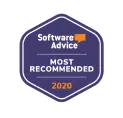“Do I really need an EVP to recruit top talent?”
That’s a question I get from time to time. When I talk with clients about employer value propositions, I get nods of affirmation. But since most of my clients are small and midsize businesses, they often feel that it doesn’t really apply to them.
“I need to hire great people, but I don’t what my EVP is. Can I just skip that and start recruiting people?”
In a way, that’s like saying that you want good people to come work for you, but you don’t have any reasons to give them to do that. Because your EVP is the reason that people want to work for you.
So yes, if you want A-players to come work for you, you need an EVP.
So what is an EVP?
According to SHRM, 84 percent of the world’s top 100 most attractive employers (as defined by college students) have something in common: An employer value proposition (EVP), also known as an employee value proposition (EVP).
An EVP is essentially the value received by employees in return for the value they provide to their employers. Or as Indeed defines it, “An employee value proposition is the set of benefits you offer employees in return for the skills, experience, and qualities they bring to the position. In simple terms, what’s in it for them?”
“This strategic statement defines how a company wants to be perceived by its employees,” says SHRM. “It embodies the company’s values and ideals and is a fundamental step in defining an employer brand strategy for talent acquisition.”
Gartner, Inc., the business research company, believes that “the relationship between employee and employer has changed. Progressive organizations are shifting from an employee-centered value proposition to a human-centered value proposition that treats employees as people, not workers.”
Hinge, the marketing and research company, reminds us that an EVP “is both a marketing message and a promise, so be careful that you don’t make claims that can’t come true. At the same time, you want to develop a message that’s positive, approachable, and energizing.”
Think of it as an ice breaker in your employer brand relationship.
A brand is a relationship. This is true whether you’re talking about a consumer brand or an employer brand. As such, strong brands are founded on a proposition. This proposition defines the benefits you will receive from your relationship with the brand.
Your Employer Value Proposition provides a consistent point of reference for everything you say and do as an employer. It really defines how you want to be perceived by your current and prospective employees.
Another way to look at it is a promise you make as an employer to your employees in exchange for the commitment your people bring to the team.
Let’s see some examples of Employer Value Propositions
- Lottery.com: Win Together
We know that the world owes us nothing and that our incredible team is our biggest asset. We have a phenomenal culture and unparalleled drive, and each member of the team is carefully selected because they fit with our tribe and our vibe. We celebrate our awesome diversity, believe that everyone is an entrepreneur, and appreciate the unique talents and perspectives that each of us brings to the table. After all, when our team members win, we win as a whole, and more than anything, we love to #wintogether.
- Pacific Life: Living the Pacific Life
A career at Pacific Life is more than a job. It means working alongside agile, mission-driven individuals. We bring together diversity of people, thought, and opinion to drive business success. Together, we give our policyholders the time, attention, and expertise they deserve – helping them to reach their financial goals and safeguard their futures. Living the Pacific Life means empowering and celebrating each other, our partners, customers, and community. It means leveraging our unique perspectives to drive positive change. If you want to be fulfilled in work and in life, you belong here.
- Nestlé Purina: We Stand Taller
We Stand Taller because we dare to make every day better. To give it our all. To put our name on the work we do. Doing the right things right. Making our work matter. Why? Because we care. We’re inspired by the words of our founder, William H. Danforth, who believed that integrity, passion, expertise, and performance are the keys to Standing Taller and making good lives better. Today, we carry on the legacy, passionately enriching the lives of pets and the people who love them. #WeStandTaller, do you?
- Netflix: People over process
Like all great companies, we strive to hire the best and we value integrity, excellence, respect, inclusion, and collaboration. What’s special about Netflix, though, is how much we:
- encourage independent decision-making by employees
- share information openly, broadly, and deliberately
- are extraordinarily candid with each other
- keep only our highly effective people
- avoid rules
- Accenture: Work at the heart of change
At the heart of every great change is a great human. Every day our People of Change are doing incredible things by working together to pursue our shared purpose–to deliver on the promise of technology and human ingenuity. Follow your purpose and make real, lasting, impactful change. Join our exceptional people who are combining their ingenuity with the latest technologies to solve some of the world’s biggest challenges.
Does your employer value proposition have real value?
If recruiting top talent is not a priority for you, then no, you probably don’t need an employee value proposition. But I’ve talked with a lot of different entrepreneurs, small business owners, midsize business owners, hiring managers, and recruiters in the last 10 years. And every one of them said that recruiting top talent was very important to them.
Here’s some research data that backs up the value of an employee value proposition. According to Gartner, the $4.1 billion research company, “Organizations that effectively deliver on their EVP can decrease annual employee turnover by just under 70% and increase new hire commitment by nearly 30%.”
But there’s more reporting from Gartner that tells us that the traditional EVP may be falling short.
Traditional EVPs must evolve with the times
Recent Gartner research concludes that “the pandemic has changed the relationship between people and their work, and the employee value proposition (EVP) must evolve to reflect these changes.
This new Gartner study was conducted with 5,000 employees and 85 HR leader interviews on EVP practices, challenges, and solutions. According to their findings, the problem with traditional EVPs could be too much focus on “what we give employees” rather than “why.”
Gartner sees the following as “telling signals that point to deepening weakness in traditional EVP:
- Engagement: Engagement, which drives both performance and retention outcomes, has remained relatively flat since 2016.
- Attraction: Only 29% of functional leaders report they have all the talent they need to meet current performance requirements. This challenge is especially pronounced in the most competitive areas of the labor market, such as IT and data science roles.
- Intent to stay: Only 23% of HR leaders believe most employees will continue working in their current organization after the pandemic ends.
- EVP satisfaction: Only 31% of HR leaders think their employees are satisfied with the EVP, and 65% of candidates report they have actually discontinued a hiring process due to an unattractive EVP.
Gartner believes that “HR leaders must evolve their EVP management by delivering a more human deal centered around the whole person.” This new “human deal” is comprised of five components, and these are Gartner’s key actions to build a more human EVP:
- Build deeper connections by integrating inclusion goals into day-to-day work and talent processes, focusing on direct family benefits that match employee and organization needs, and training managers on how to identify employees’ trust through empathetic conversations.
- Provide radical flexibility to all by giving employees flexibility – choices within team-established boundaries, determining which activities within a role can be flexible, and identifying manager-tested flexibility solutions.
- Create personal growth opportunities for employees by providing them with objective career coaches and empowering them to design development that meets their personal needs.
- Ensure holistic well-being by holding employees accountable for personalizing well-being progress, encouraging mental health champions to hold honest conversations about mental well-being, and establishing clear dos and don’ts for how managers can support employee wellness.
- Take action on shared purpose by establishing cross-organizational ownership of societal issue decision making, use peer coaching to hold employees accountable for taking personalized action on societal issues, and prioritize societal issues aligned with the organization’s goals.
What do your ideal candidates value?
That’s the real question you should ask yourself when thinking about your Employee Value Proposition. If you know what they want from you as an employer, make sure your EVP speaks to what your candidates want. As SHRM reminds us, “the most successful EVPs are tailored to the needs of a specific organization and its workers.”
So don’t worry about getting every word right in your EVP. Focus on getting all of your offerings in line with your employees’ desires. Start with your ideal candidates. Make sure that everything you offer as an employer checks all the boxes for those candidates. Then, make sure you’re conveying your Value Proposition in all of your recruitment communications. Because the real value of your EVP will not be realized until you market it to your candidates and start making some great hires.
Creating your EVP is as easy as A, B, C, and D
In large companies, developing an Employer Value Proposition can take a while since the process will likely involve multiple steps and decision-makers. But in smaller companies, it can be done quickly and efficiently. Here’s how you can create your Employer Value Proposition in four easy steps:
Analyze the data
Have you conducted employee surveys, exit interviews, or performance reviews? Start with this data to gauge employee satisfaction and identify possible areas of improvement.
Bring in your people
Get input directly from your employees. If your company is small, conduct one-on-one meetings. If it’s midsize to large, try focus groups. The goal is to find out what people like about working in your company and what makes them want to stay there.
Craft your message
Put your EVP in writing, then get it wherever your current and prospective employees will see it. If you have a career site, you definitely want to put it so candidates know what you’re offering them as a potential employer.
Deliver on the promise
Don’t forget that an EVP is your promise to your employees. Just like company core values, your EVP shouldn’t just be expressed. It should be lived and embraced.
The real value of an employer value proposition is realized when the promise is fulfilled.













